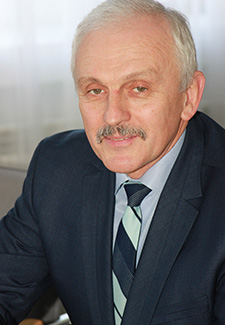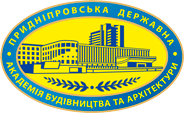Scientific profile

Associate Professor of the department of Highways, Geodesy and Land management,
Candidate of Technical Sciences (Ph. D.), Associate Professor
Serhii
BIEHICHEV
Contacts and CV
Research
Current research
I take part in the implementation of scientific research work on the topic "Resource-saving methods of designing structures on soil bases and automated geographic information systems of real estate cadastral register" №0121U100385 (2021, 2022).
More
Past research
During 2007-2010 I have been participated in the implementation of research work on the topic "Scientific fundamentals of resource conservation in the design of transport facilities and land management" (№0107U008795).
More
During 2011-2015 I have been participated in the implementation of research work on the topic "Resource-saving methods of designing in construction and land management" (№0111U006487).
More
I have been participated in the implementation of research work on the topic "Improvement of Design Methods in Construction and Land Management" (№0116U000780) during 2016-2020.
More
Publications
1. Антоненкова А.В. Створення геодинамічного полігону на території м. Дніпро на базі існуючих пунктів полігонометрії / А.В. Антоненкова, Г.С. Ішутіна, С.В. Бєгічев // Збірник матеріалів Х Міжнародної науково-технічної конференції студентів, аспірантів та молодих вчених «Молодь: наука та інновації». – Дніпро : НТУ «ДП», 2022 – С. 137-138. [Електронний ресурс]. – Режим доступу: https://rmv.nmu.org.ua/ua/arkhiv-zbirok-konferentsiy/molod-nauka-ta-innovatsii-2022/molod-2022.pdf
2. Бєгічев С.В., Ішутіна Г.С. Обґрунтування супроводження містобудівельних проектів комплексом наукових досліджень екологічного стану земельних відводів під забудову / С.В. Бєгічев, Г.С. Ішутіна // Вісник ПДАБА. – №6 (271-272).–2020. – С. 46-57. [Електронний ресурс]. – Режим доступу: http://visnyk.pgasa.dp.ua/article/view/218912
3. Формування класифікації земельних ділянок та ринку нерухомості залежно від фактору техногенного забруднення території / С. В. Бєгічев, Г.С. Ішутіна, І.Г. Андреєва Збірник тез доповідей 24-ї Міжнародної конференціїGeoforum-2019 – Львів-Брюховичі-Яворів, 2019. – С. 36. [Електронний ресурс]. – Режим доступу: http://zgt.com.ua/wp-content/uploads/2019/04/%D0%A2%D0%95%D0%97%D0%98.pdf
Courses
1. Higher geodesy
Higher Geodesy deals with the figure of the Earth, its gravity field, Earth orientation in space, and monitoring of global dynamic processes like plate tectonics and sea level variations. It makes use of space geodetic techniques and measurements at the Earth surface. Higher Geodesy plays a key role in improving our understanding of the complex Earth system and provides accurate and stable reference frames that are fundamental to any kind of positioning on Earth and in Space as well as to the observation of Global Change.
2. Geoinformation systems and databases
A geographic information system (GIS) is a type of database containing geographic data (that is, descriptions of phenomena for which location is relevant), combined with software tools for managing, analyzing, and visualizing those data.
The uncounted plural, geographic information systems, also abbreviated GIS, is the most common term for the industry and profession concerned with these systems. It is roughly synonymous with geoinformatics and part of the broader geospatial field, which also includes GPS, remote sensing, etc.
Geographic information science, the academic discipline that studies these systems and their underlying geographic principles, may also be abbreviated as GIS, but the unambiguous GIScience is more common. GIScience is often considered a subdiscipline of geography within the branch of technical geography.
Geographic information systems are utilized in multiple technologies, processes, techniques and methods. They are attached to various operations and numerous applications, that relate to: engineering, planning, management, transport/logistics, insurance, telecommunications, and business. For this reason, GIS and location intelligence applications are at the foundation of location-enabled services, which rely on geographic analysis and visualization.
GIS provides the capability to relate previously unrelated information, through the use of location as the "key index variable". Locations and extents that are found in the Earth's spacetime are able to be recorded through the date and time of occurrence, along with x, y, and z coordinates; representing, longitude (x), latitude (y), and elevation (z). All Earth-based, spatial–temporal, location and extent references should be relatable to one another, and ultimately, to a "real" physical location or extent. This key characteristic of GIS has begun to open new avenues of scientific inquiry and studies.
3. Theory of mathematical processing of geodetic measurements
"Theory of mathematical processing of geodetic measurements" belongs to disciplines of professional and practical training, the study of which is a necessary prerequisite for the training of a highly qualified specialist in land management.
The main goal of the discipline is to provide students with the necessary knowledge and skills needed to perform geodetic measurements and calculations, including land management works. The study of the discipline ensures the acquisition of theoretical knowledge and practical skills in processing and solving geodetic problems for the processing of both one quantity and for the simultaneous processing of many interconnected geodetic quantities.
4. Organization of scientific work of masters
The discipline " Organization of scientific work of masters" is aimed at students' mastery of special knowledge and methodical skills of independent, creative work on the organization and research work and writing of qualifying scientific work. Studying the discipline forms knowledge, skills and abilities for conducting scientific research in the chosen field and arming students with elements of scientific research methodology. This will contribute to the development of their creative thinking, optimal organization of mental activity.
5. Electronic geodetic devices
The purpose of teaching the discipline "Electronic geodetic devices" is to acquire basic knowledge of the complex of physical phenomena and processes that underlie the operation of electronic geodetic instruments and computing equipment.
The aim of the course is to provide the student with theoretical and practical training for working with electronic geodetic devices. The devices are used in determining the coordinates and heights of points on the earth's surface, as well as in other engineering-geodetic and cadastral works.
The main parameters determined during geodetic or topographic works include the coordinates of points or objects. For this, linear and angular values are measured by electronic methods, including the use of navigation and satellite systems.
Practical work with modern navigation and geodetic satellite systems and electronic total stations in production conditions is necessary for a more perfect assimilation of the discipline.
6. Modern technologies of topographical and geodetic works
The goal of the educational discipline "Modern technologies of topographical and geodetic works" is the formation of students’ professional practical skills and theoretical knowledge, which are necessary for the correct selection and use of the latest tools, software and data when conducting activities in the field of geodesy and land management.
The main tasks of the discipline "Modern technologies of topographical and geodetic works" are the formation of professional competencies that allow you to independently conduct activities in the field of geodesy and land management using remote sensing data, unmanned aerial vehicles, ground laser scanning, lidar surveys, etc.
